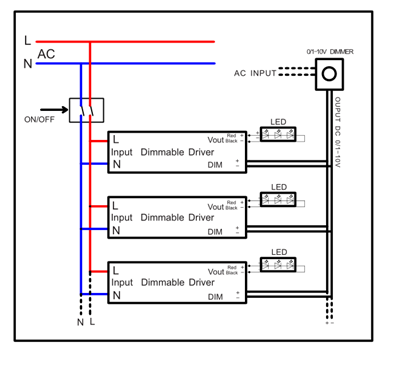What’s the difference between the dimming types
2020-04-29 00:41:57
What’s the difference between the dimming types
With the advent of LED technology more attention needs to be paid to the way light fittings are controlled. Switching LEDs is very straightforward but dimming is a bit more complicated. There are different ways of dimming (see below for the different dimming types) and the type of LED Driver needs to be matched to the control system in use. It is also recommended to test drivers and dimmers together; even if theoretically compatible, they aren’t always so in practice. We ensure that the fittings and drivers we supply work together well.
Non Dimming driver
If you don’t need to dim your LED fitting then this is the driver type to choose. These drivers will work with conventional on / off light switches or lighting control systems.
0-10V dimming power supply
Used as an early fluorescent dimming system and still used today, 0-10V dimming has been adapted to become a reliable LED dimming control protocol.
0-10 V is one of the earliest and simplest electronic lighting control signaling systems; simply put, the control signal is a DC voltage that varies between zero and ten volts. The controlled lighting should scale its output so that at 10 V, the controlled light should be at 100% of its potential output, and at 0 V it should at the lowest possible dimming level.

Triac dimming power
TRIAC dimming controls act as a high-speed switch and are used to control the amount of electrical energy passing to a bulb. A ‘trigger’ dictates what point the device starts to conduct the electricity, essentially “chopping up” the voltage waveform, stopping the voltage from being supplied at full load.






